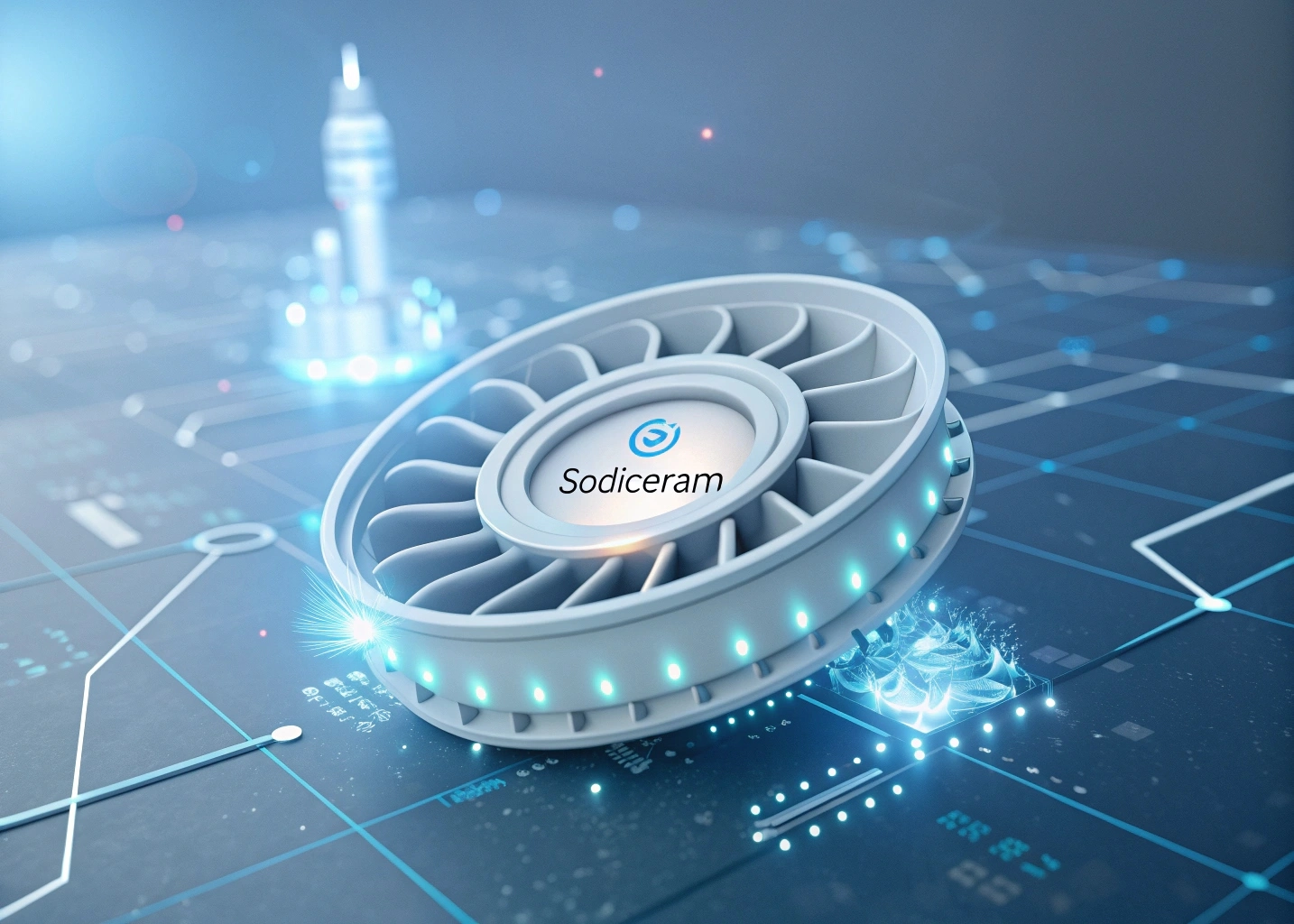Sodiceram: The Advanced Ceramic Revolutionizing Modern Industries

Sodiceram represents a breakthrough in advanced ceramic technology, offering exceptional performance characteristics that have made it indispensable across multiple industries. This innovative material combines superior durability with unique chemical properties, making it an increasingly popular choice for applications ranging from electronics to aerospace engineering.
Understanding sodiceram’s composition, applications, and advantages can help professionals make informed decisions about material selection for their projects. This comprehensive guide explores everything you need to know about this remarkable ceramic material and its growing impact on modern manufacturing.
What is Sodiceram?
Sodiceram is an advanced ceramic material characterized by its unique sodium-based composition and exceptional thermal stability. The material belongs to the family of technical ceramics, which are engineered for specific performance requirements rather than traditional aesthetic purposes.
Chemical Composition and Properties
The base composition of sodiceram includes sodium oxide compounds combined with various ceramic matrices. This unique formulation gives the material several distinctive properties:
- High thermal shock resistance
- Excellent electrical insulation capabilities
- Superior chemical inertness
- Low thermal expansion coefficient
- Outstanding mechanical strength
Manufacturing Process
Sodiceram production involves a carefully controlled process that begins with precise mixing of raw materials. The sodium-based compounds are combined with ceramic precursors under specific temperature and atmospheric conditions. The mixture undergoes high-temperature sintering, typically between 1200°C and 1400°C, which creates the final crystalline structure.
Quality control throughout the manufacturing process ensures consistent properties and performance characteristics. Advanced testing methods verify thermal stability, mechanical strength, and electrical properties before the material reaches end users.
Applications of Sodiceram
The versatility of sodiceram has led to its adoption across numerous industries, each taking advantage of different aspects of its performance profile.
Electronics and Semiconductor Industry
In electronics manufacturing, sodiceram serves as an excellent insulating material for high-temperature applications. Its low dielectric constant and minimal signal loss make it ideal for:
- High-frequency circuit substrates
- Insulating components in power electronics
- Heat sinks for semiconductor devices
- Protective housings for sensitive electronic components
Aerospace and Defense
The aerospace industry values sodiceram for its lightweight properties combined with exceptional durability. Applications include:
- Thermal barrier coatings for engine components
- Radar-transparent structures
- Insulation systems for spacecraft
- Protective components in missile guidance systems
Industrial Processing
Manufacturing facilities use sodiceram in environments where traditional materials fail due to extreme conditions:
- Furnace linings and refractory components
- Chemical processing equipment
- High-temperature measurement devices
- Corrosion-resistant pipeline components
Medical and Laboratory Equipment
The biocompatible nature of sodiceram makes it suitable for specialized medical applications:
- Laboratory crucibles and containers
- Medical device components requiring sterilization
- Dental restoration materials
- Surgical instrument components
Advantages and Disadvantages
Key Advantages
Thermal Performance: Sodiceram excels in high-temperature environments where other materials would degrade or fail. Its thermal shock resistance allows for rapid temperature changes without cracking or structural damage.
Chemical Resistance: The material demonstrates excellent resistance to acids, bases, and organic solvents, making it ideal for harsh chemical environments.
Electrical Properties: Superior insulation characteristics combined with low dielectric loss make sodiceram valuable in electrical applications.
Mechanical Durability: High compressive strength and wear resistance ensure long service life in demanding applications.
Dimensional Stability: Low thermal expansion means components maintain precise dimensions across temperature ranges.
Potential Drawbacks
Cost Considerations: The specialized manufacturing process and raw materials make sodiceram more expensive than conventional ceramics.
Machining Challenges: The material’s hardness requires specialized tooling and techniques for shaping and finishing.
Brittleness: Like most ceramics, sodiceram can be susceptible to impact damage, requiring careful handling and design considerations.
Limited Availability: Fewer suppliers and longer lead times compared to standard ceramic materials.
Comparison with Alternatives
Understanding how sodiceram compares to other high-performance materials helps in making informed material selection decisions.
Versus Alumina Ceramics
While alumina ceramics offer good general-purpose performance, sodiceram provides superior thermal shock resistance and better performance at extreme temperatures. However, alumina remains more cost-effective for less demanding applications.
Versus Silicon Carbide
Silicon carbide offers excellent thermal conductivity but lacks the electrical insulation properties of sodiceram. For applications requiring both thermal performance and electrical isolation, sodiceram provides the better solution.
Versus Zirconia
Zirconia ceramics excel in mechanical strength and toughness but cannot match sodiceram’s chemical resistance and thermal stability in specialized environments.
Versus Metal Alloys
Compared to high-temperature metal alloys, sodiceram offers better corrosion resistance and electrical insulation. However, metals provide better impact resistance and easier machinability.
Future Trends and Developments
The sodiceram market continues to evolve with advancing technology and changing industry needs.
Emerging Applications
Research into new applications includes energy storage systems, where sodiceram’s properties could improve battery performance and safety. The renewable energy sector shows growing interest in sodiceram for solar panel components and wind turbine systems.
Manufacturing Innovations
Advanced manufacturing techniques, including additive manufacturing and precision molding, are expanding the possibilities for sodiceram component design. These developments could reduce costs and improve accessibility.
Enhanced Formulations
Material scientists continue developing improved sodiceram formulations with enhanced properties. Future versions may offer better fracture toughness while maintaining the material’s core advantages.
Market Growth
Industry analysts predict steady growth in sodiceram demand, driven by expanding applications in electronics, aerospace, and industrial processing. This growth may lead to increased production capacity and potentially lower costs.
Maximizing Sodiceram’s Potential
Sodiceram represents a significant advancement in ceramic technology, offering unique combinations of properties that address challenging industrial requirements. Its exceptional thermal stability, chemical resistance, and electrical insulation capabilities make it invaluable for specialized applications across multiple industries.
While cost and processing considerations may limit its use to demanding applications, the material’s performance advantages often justify the investment. As manufacturing techniques improve and new applications emerge, sodiceram is positioned to play an increasingly important role in advanced technology solutions.
For engineers and designers considering sodiceram for their applications, consulting with material suppliers and conducting application-specific testing will help ensure optimal results and cost-effectiveness.

